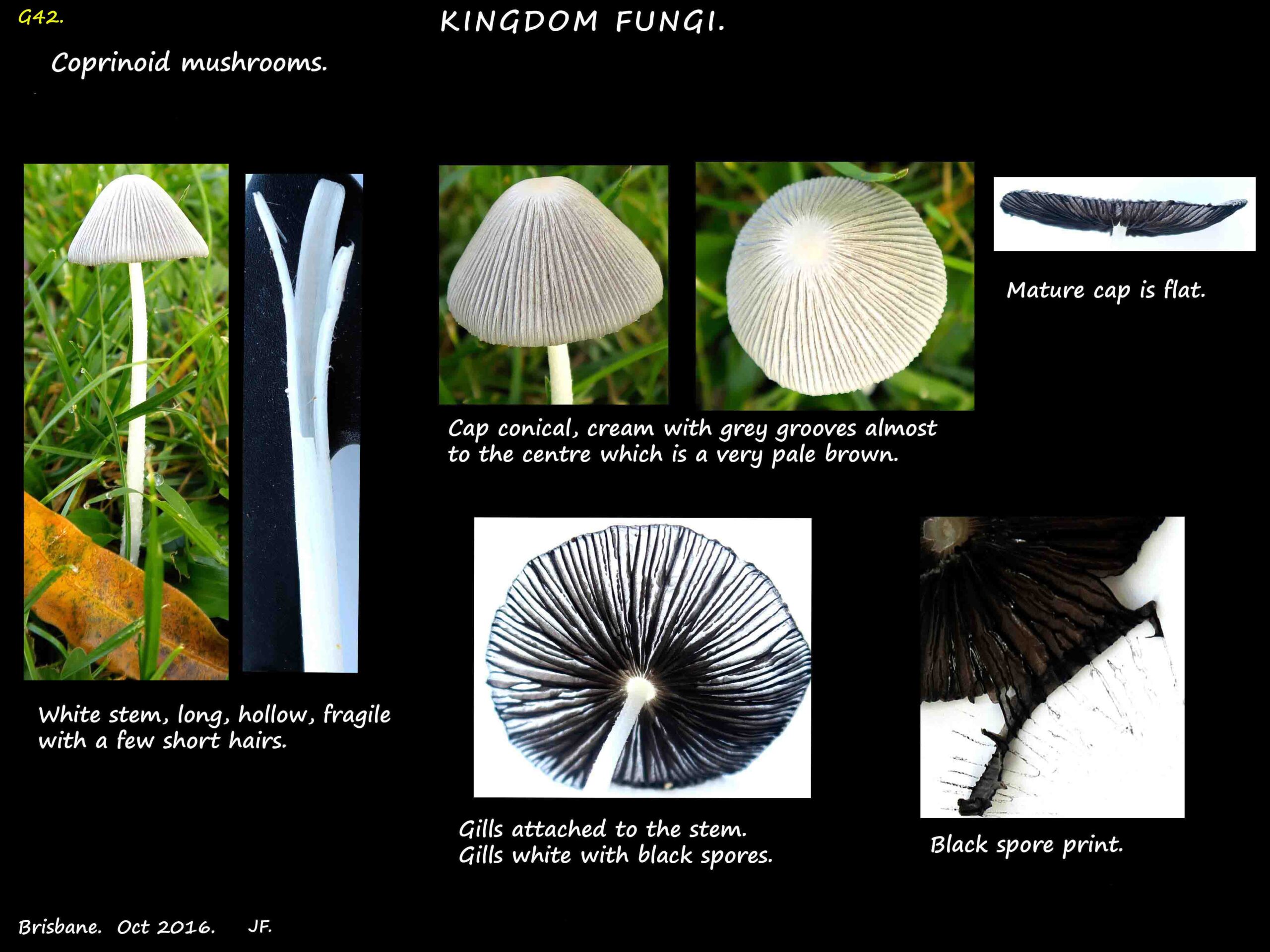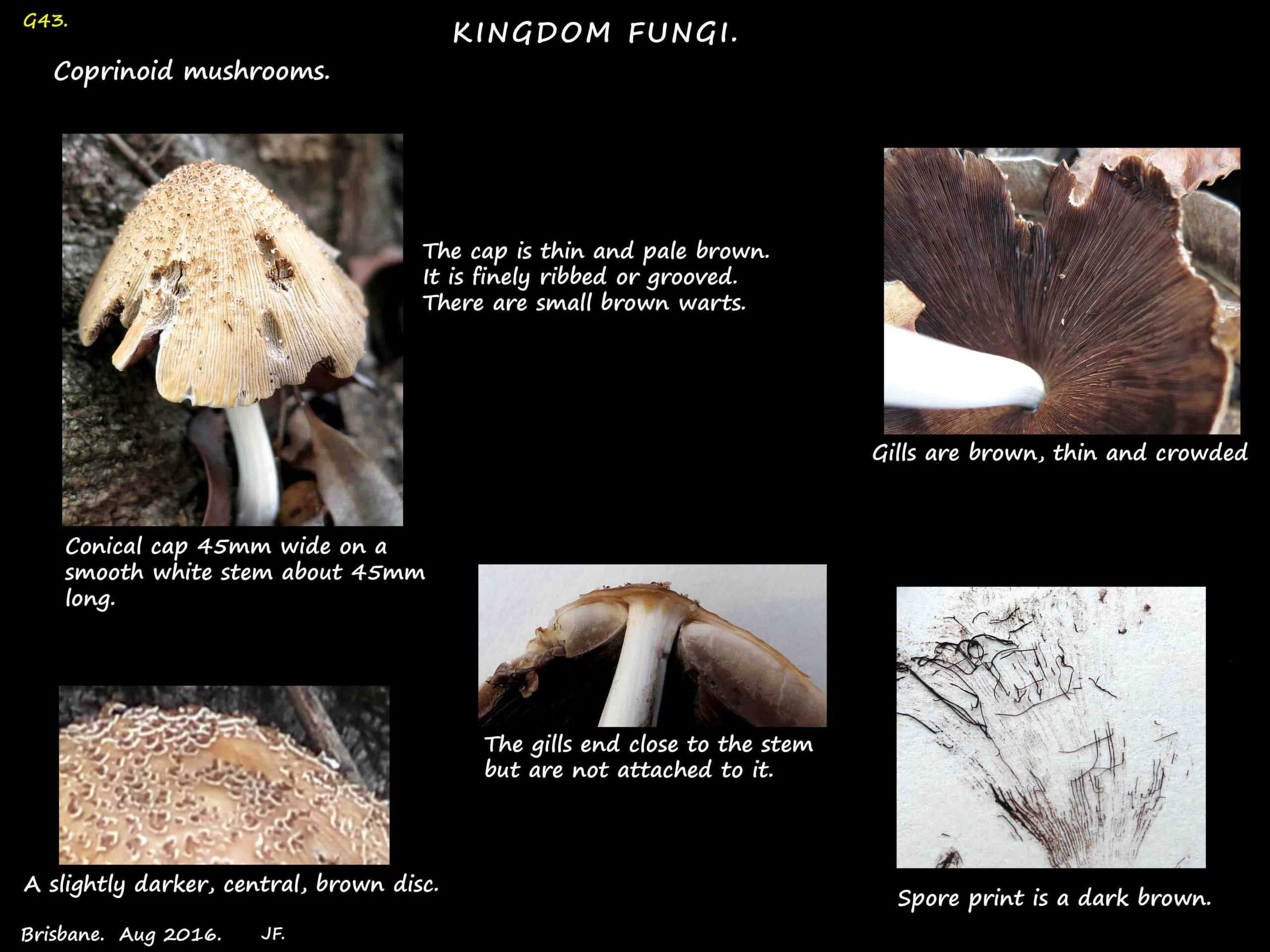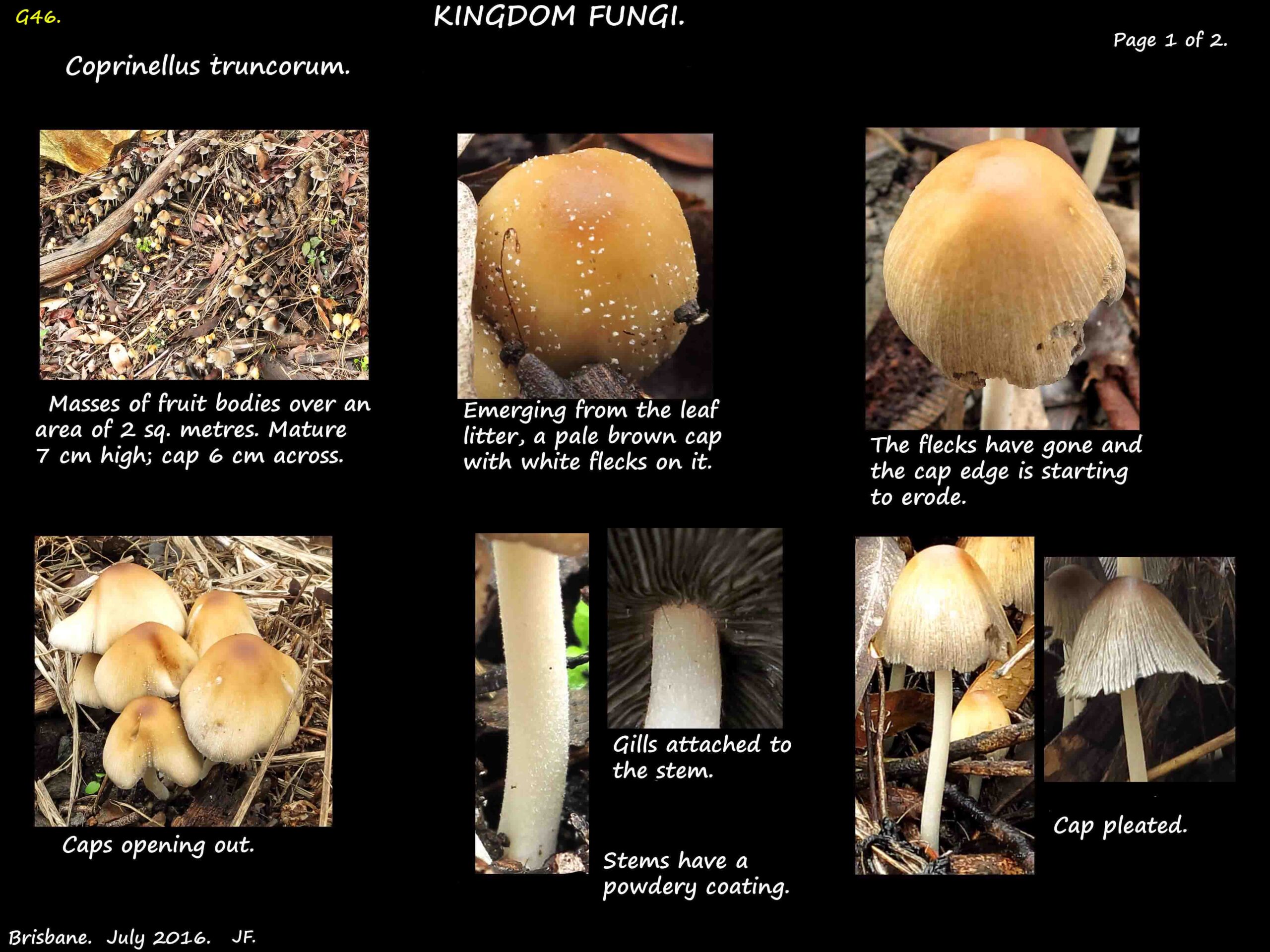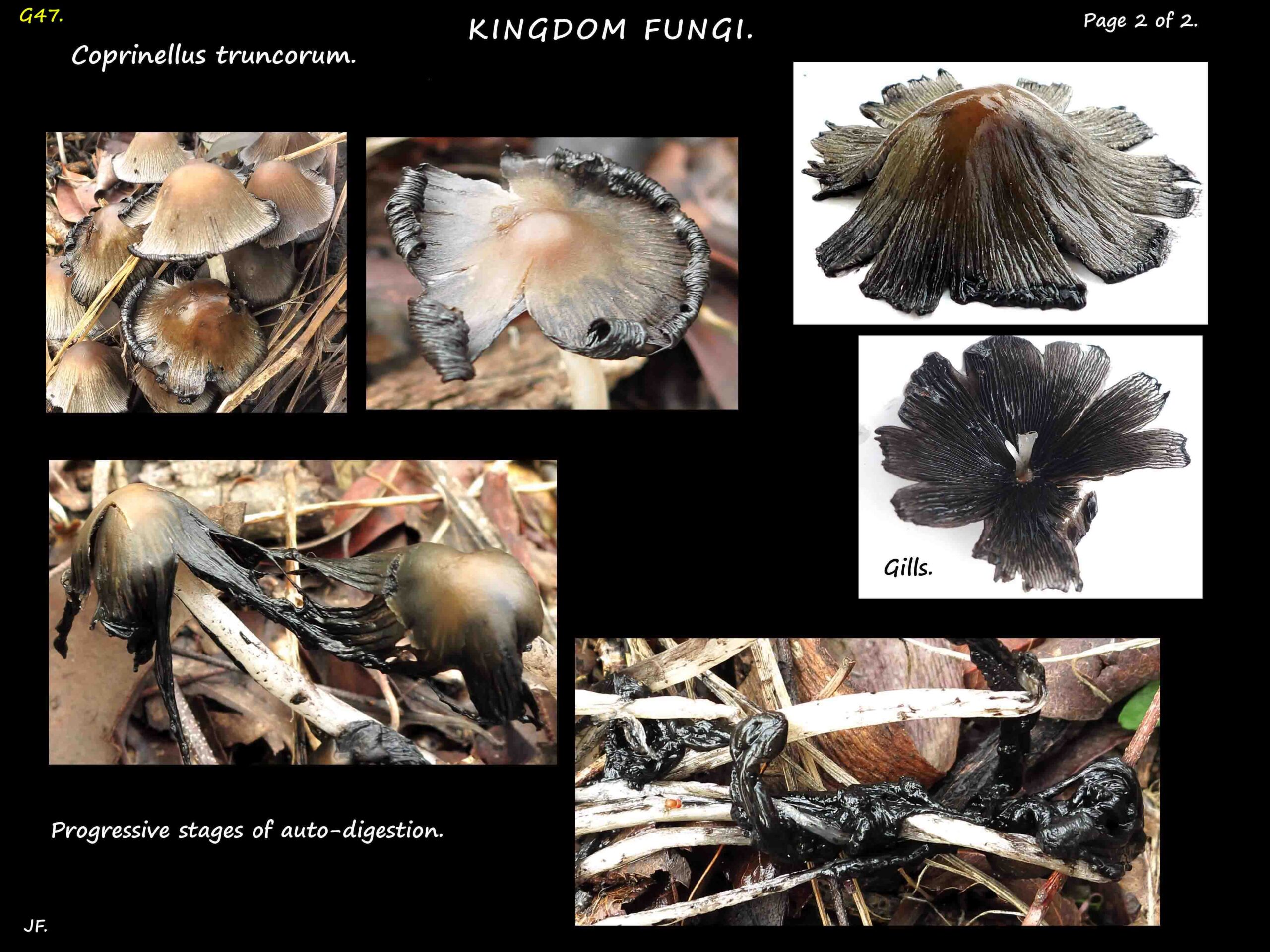Coprinoid mushrooms and the Inkcaps.
Basidiomycota > Agaricomycetes > Agaricales > Agaricaceae and Psathyrellaceae.
The coprinoid mushrooms are a group of small and very fragile mushrooms that have dark spore prints.
About half of them have caps that auto digest and are known as the Inkcaps.
They occur in 2 families.
Agaricaceae has the genus Coprinus with 3 species.
Psathyrellaceae has 3 coprinoid genera – Coprinellus, Coprinopsis, and Parasola.
The bulk of the coprinoid mushrooms are in the very similar genera of Coprinellus and Coprinopsis.
Sometimes included in the group are the genera Psathyrella and Panaeolus as they appear similar,
have dark spore prints but they do not auto digest.
Most are difficult to identify down to the species level and need microscopy for identification.
General features of the Inkcaps.
Most live on the ground where they help decompose wood and leaf litter.
They may grow singly but often form dense clumps.
They only live for hours or a day.
The fruit bodies are soft and fragile.
Size ranges from tiny up to 12 cm high with a cap up to 5 cm across.
Young caps are oval and mature ones convex, bell-shaped, umbrella-like or flat.
There is sometimes a central depression.
Caps may be white or shades of grey, brown, purple or black.
Some have scales from the universal veil.
The gills are thin and may be free of the stem or attached.
In autodigestion the process begins at the edge of the cap and spreads centrally.
Stems are fragile being only a few millimeters thick, and hollow.
They may be bare or have a ring and/or volva.
The spores are mainly black or dark brown but some are pale.
Remnants of the universal veil on the stem and cap may disappear.
J.F.





